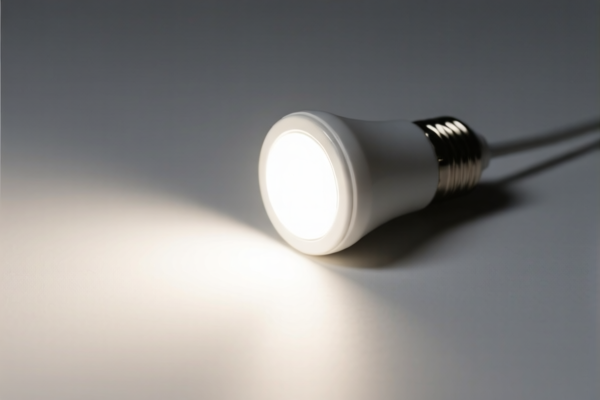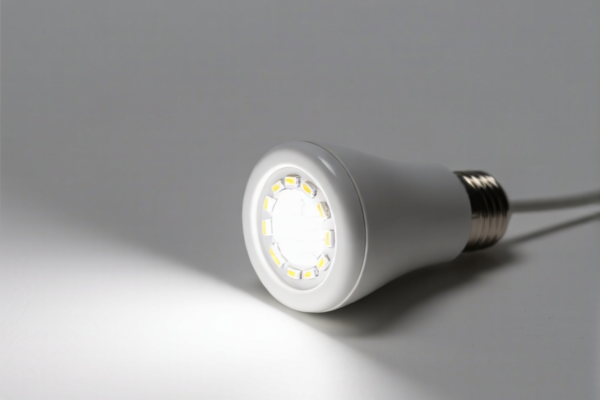| HS Code | Official Doc | Tariff Rate | Origin | Destination | Effective Date |
|---|---|---|---|---|---|
| 8310000000 | Doc | 55.0% | CN | US | 2025-05-12 |
| 8512906000 | Doc | 55.0% | CN | US | 2025-05-12 |
| 8512202080 | Doc | 55.0% | CN | US | 2025-05-12 |
| 8539391000 | Doc | 55.0% | CN | US | 2025-05-12 |
| 8513104000 | Doc | 33.5% | CN | US | 2025-05-12 |
| 8513102000 | Doc | 42.5% | CN | US | 2025-05-12 |
| 8531809026 | Doc | 37.5% | CN | US | 2025-05-12 |
| 8531809005 | Doc | 37.5% | CN | US | 2025-05-12 |
| 9006690150 | Doc | 30.0% | CN | US | 2025-05-12 |




Cold Light
Cold light refers to light sources with a color temperature above 5000K, appearing with a bluish tint. This contrasts with "warm light" which has lower color temperatures and a yellowish hue. The term doesn't refer to a specific technology, but rather a characteristic of the light emitted.
Material & Technology
Cold light is produced by various technologies, including:
- Fluorescent Lamps: These lamps use gas discharge to generate ultraviolet light, which then excites a phosphor coating to produce visible light. Different phosphor blends create different color temperatures, including cold white.
- Light Emitting Diodes (LEDs): LEDs are semiconductor devices that emit light when current passes through them. The specific semiconductor materials and doping processes determine the color of the light. LEDs are a dominant technology for cold light sources due to their efficiency and long lifespan.
- Metal Halide Lamps: These lamps produce a bright, white light often used in high-bay applications.
- Xenon Lamps: Used in specialized applications requiring high intensity, such as photography and automotive headlights.
Purpose & Function
- Enhanced Visibility: Cold light's bluish tint can improve contrast and detail perception, making it suitable for tasks requiring high accuracy.
- Alertness & Focus: Studies suggest that cold light can suppress melatonin production, promoting wakefulness and concentration.
- Modern Aesthetics: Cold light is often associated with contemporary design and a clean, minimalist aesthetic.
- Plant Growth: Certain wavelengths within the cold light spectrum are beneficial for plant photosynthesis, making it useful in horticulture.
Usage Scenarios
- Commercial Spaces: Offices, retail stores, and hospitals often use cold light to create a productive and focused environment.
- Industrial Settings: Warehouses, factories, and workshops utilize cold light for task lighting and safety illumination.
- Security Systems: Cold light enhances visibility for surveillance cameras.
- Automotive Headlights: LED headlights often emit cold white light for improved road visibility.
- Photography & Videography: Used for specific lighting effects and color accuracy.
- Horticulture: Grow lights utilizing cold light spectrums to support plant growth.
Common Types
- Cool White LEDs: A common and energy-efficient option for general lighting. Color temperatures typically range from 5000K to 6500K.
- Daylight LEDs: Mimic natural daylight, with color temperatures around 6500K.
- High-Color Rendering Index (CRI) Cold Light: These LEDs offer accurate color representation, essential for tasks requiring precise color perception.
- UV Light: Although invisible to the human eye, certain UV lights can be considered cold light sources and are used for sterilization and disinfection.
- Blue Light LEDs: Emits light primarily in the blue spectrum. While used in certain applications, excessive exposure can have negative health effects.
Based on the provided information, “cold light” can potentially fall under several HS code classifications, depending on its specific composition and application. Here's a breakdown of relevant HS codes:
- 8512906000: Electrical lighting or signaling equipment (excluding articles of heading 8539), windshield wipers, defrosters and demisters, of a kind used for cycles or motor vehicles; parts thereof: Parts: Of lighting equipment: Other. This code covers parts for lighting equipment used in vehicles. If the “cold light” is a component of such a system, this could be applicable. The total tax rate is 55.0%.
- 8513104000: Portable electric lamps designed to function by their own source of energy (for example, dry batteries, storage batteries, magnetos), other than lighting equipment of heading 8512; parts thereof: Lamps: Other. If the “cold light” is a self-contained portable lamp, this code may apply. The total tax rate is 33.5%.
- 8513102000: Portable electric lamps designed to function by their own source of energy (for example, dry batteries, storage batteries, magnetos), other than lighting equipment of heading 8512; parts thereof: Lamps: Flashlights. If the “cold light” is specifically a flashlight, this code is relevant. The total tax rate is 42.5%.
- 8539391000: Electrical filament or discharge lamps, including sealed beam lamp units and ultraviolet or infrared lamps; arc lamps; light-emitting diode (LED) light sources; parts thereof: Discharge lamps, other than ultraviolet lamps: Other: Cold-cathode fluorescent lamps (CCFLs) for backlighting of flat panel displays. This code specifically covers cold-cathode fluorescent lamps (CCFLs) used for backlighting displays. The total tax rate is 55.0%.
According to the provided reference material, the HS code options related to 'cold light' are limited, with only the following 4 found.
It is important to determine the exact composition and function of the “cold light” to select the most appropriate HS code. If the light source is a component of a larger vehicle system, 8512906000 may be suitable. If it is a self-contained portable lamp, either 8513104000 or 8513102000 could apply, depending on whether it is a general lamp or a flashlight. If it is a CCFL used for display backlighting, 8539391000 is the most appropriate choice.
Customer Reviews
No reviews yet.